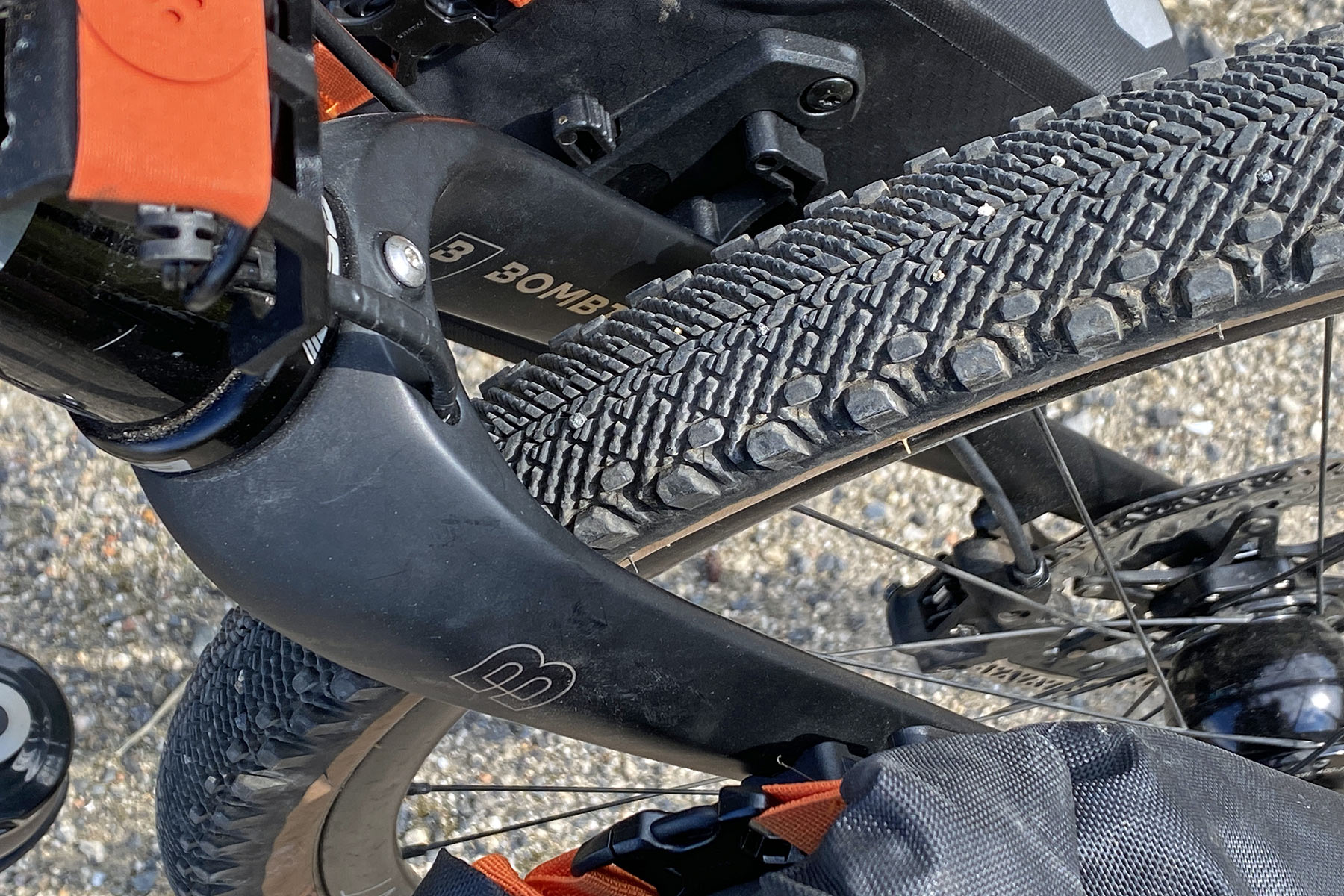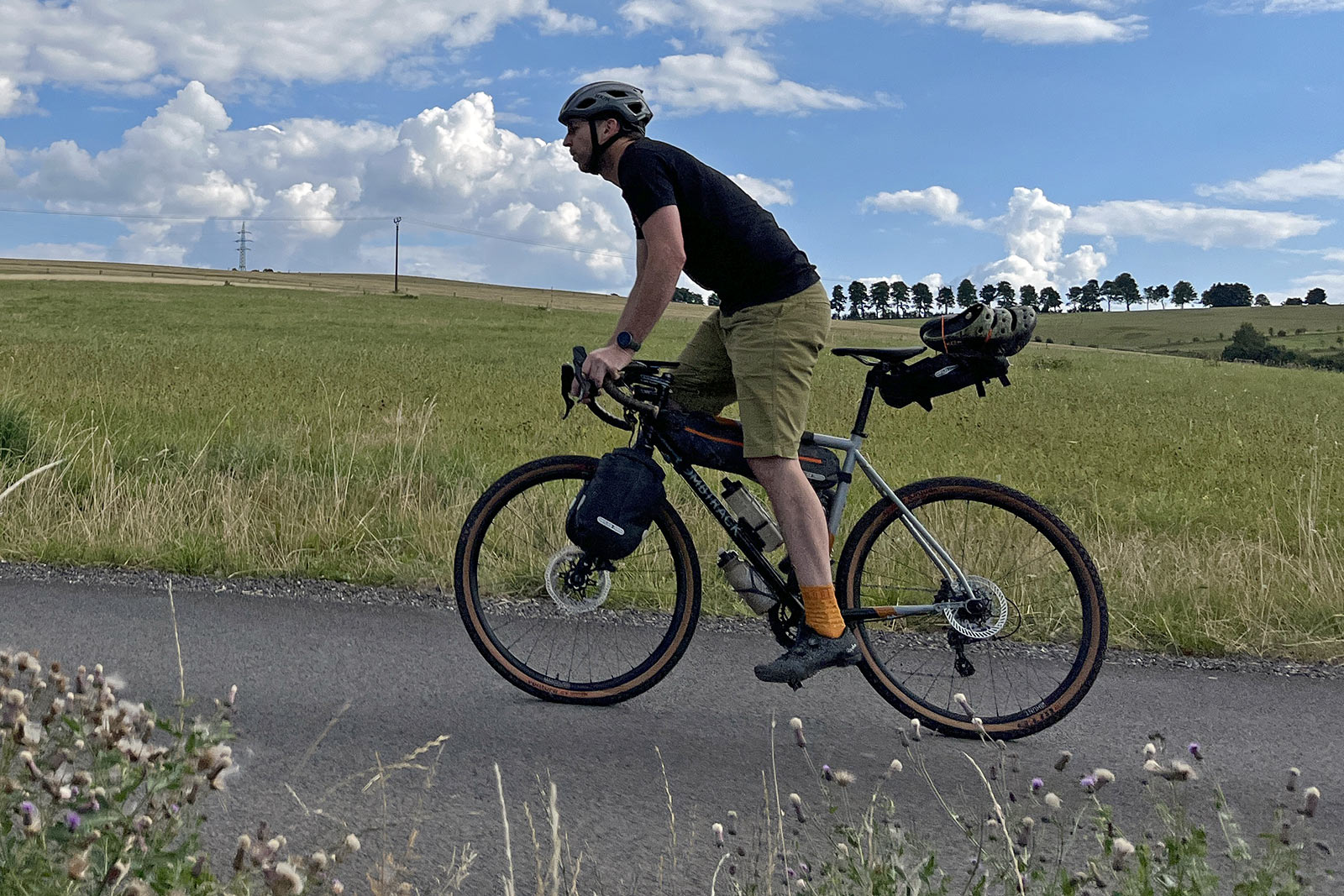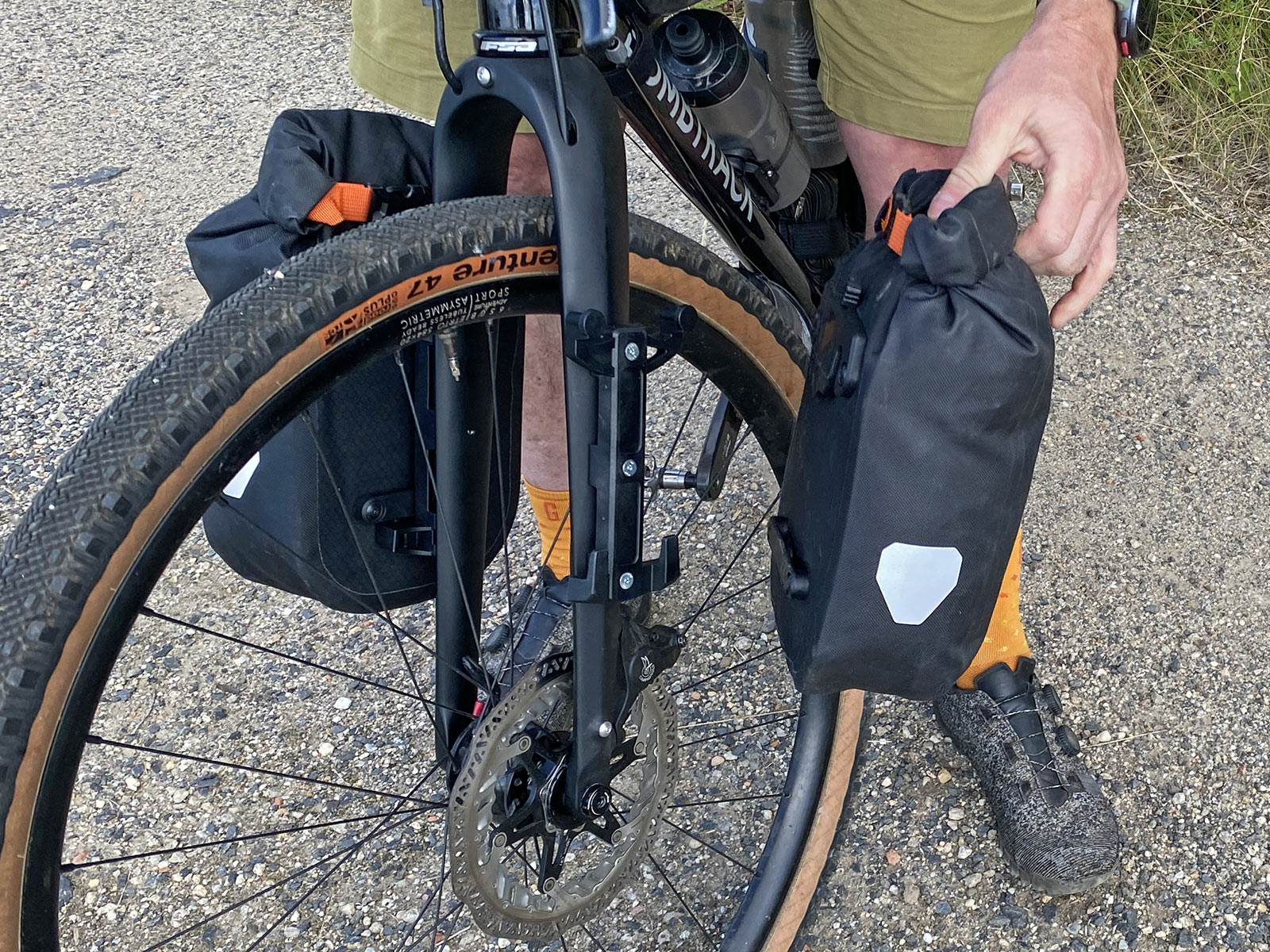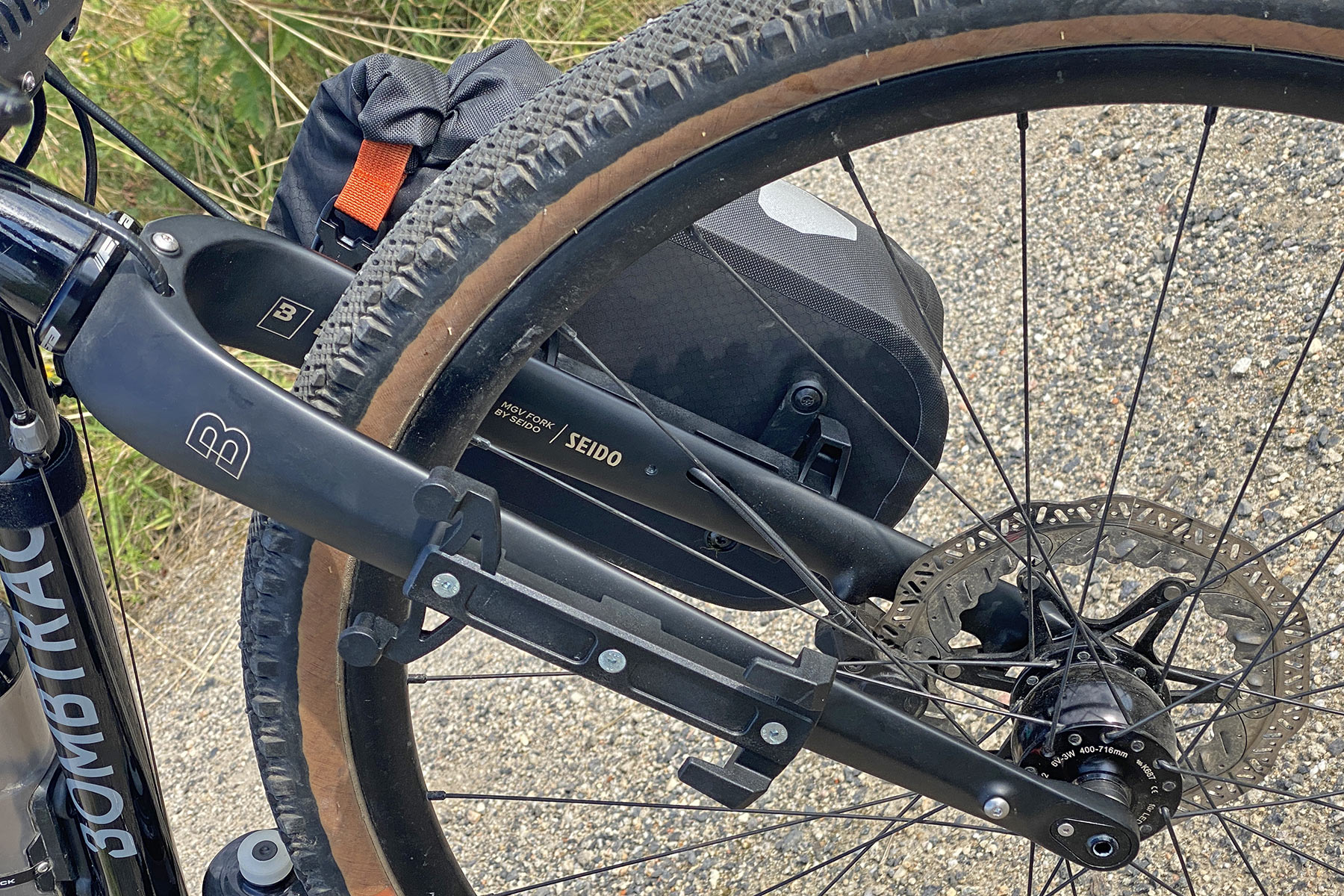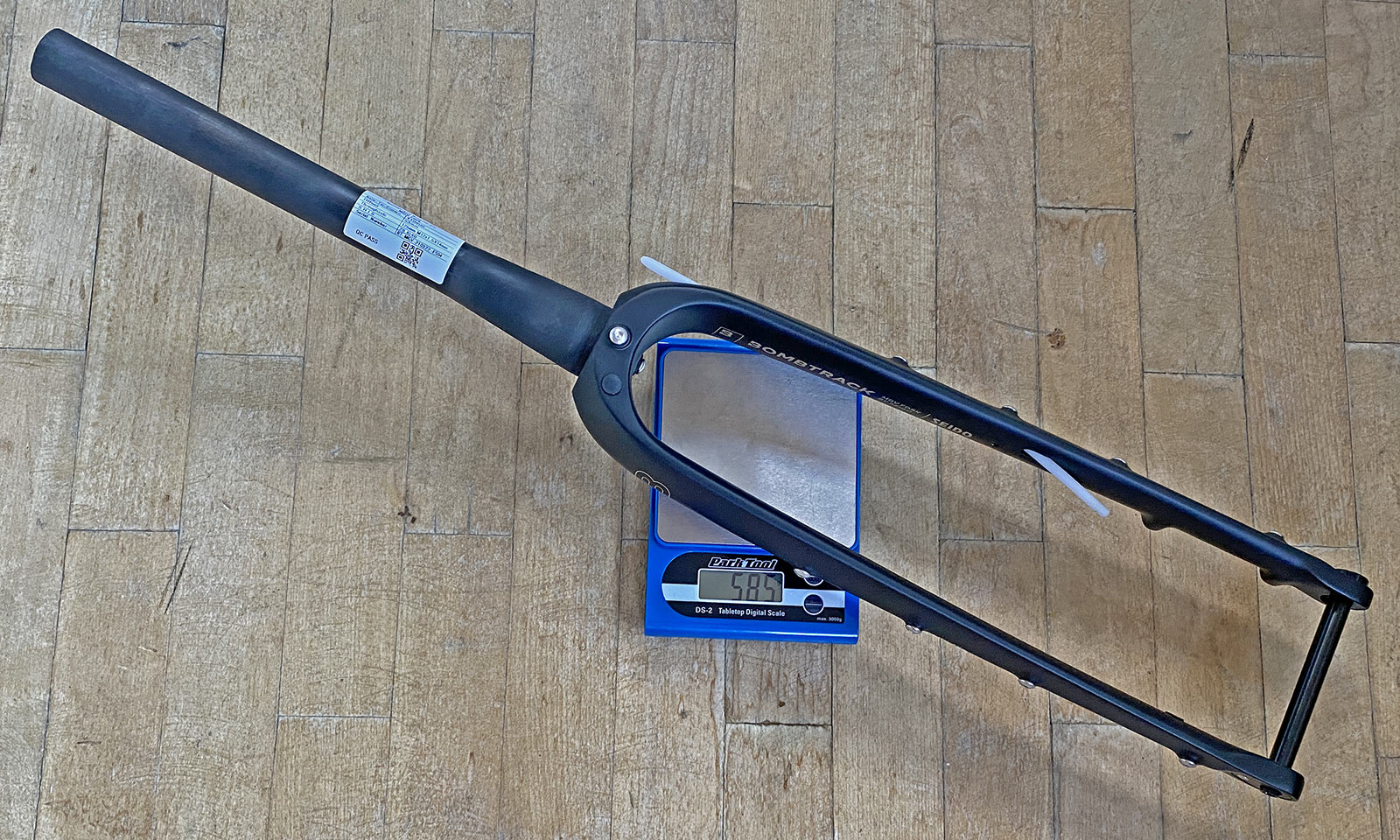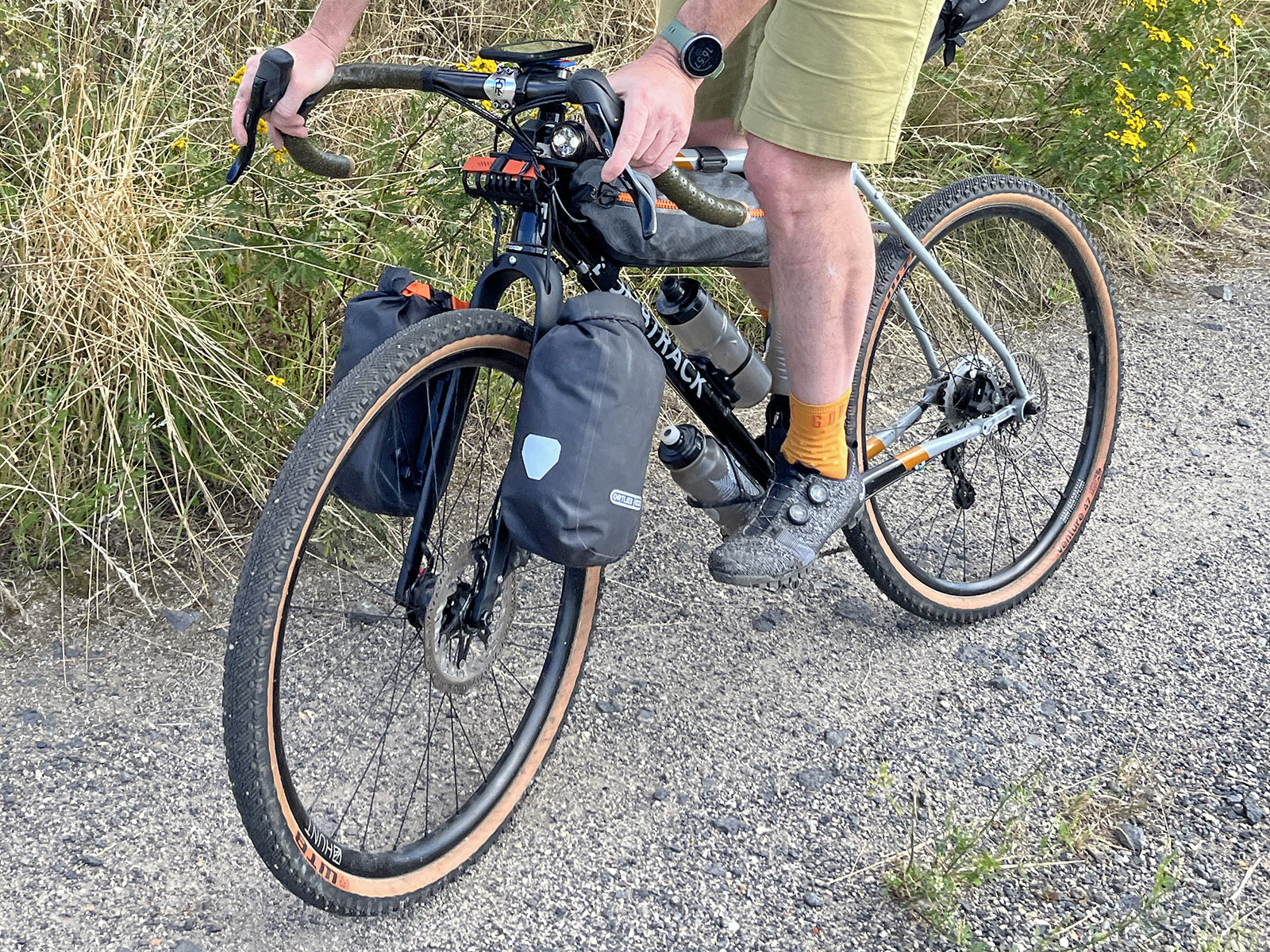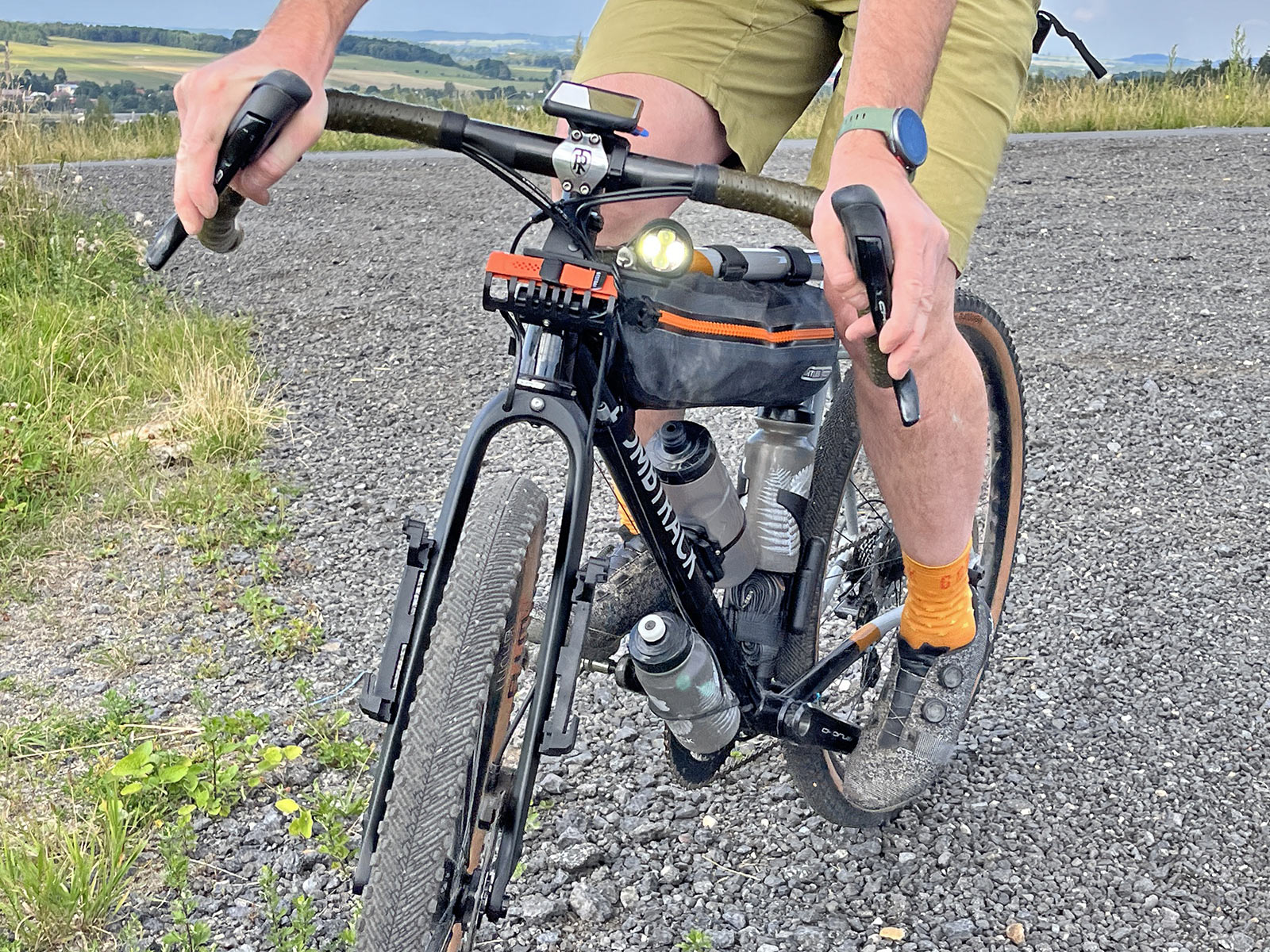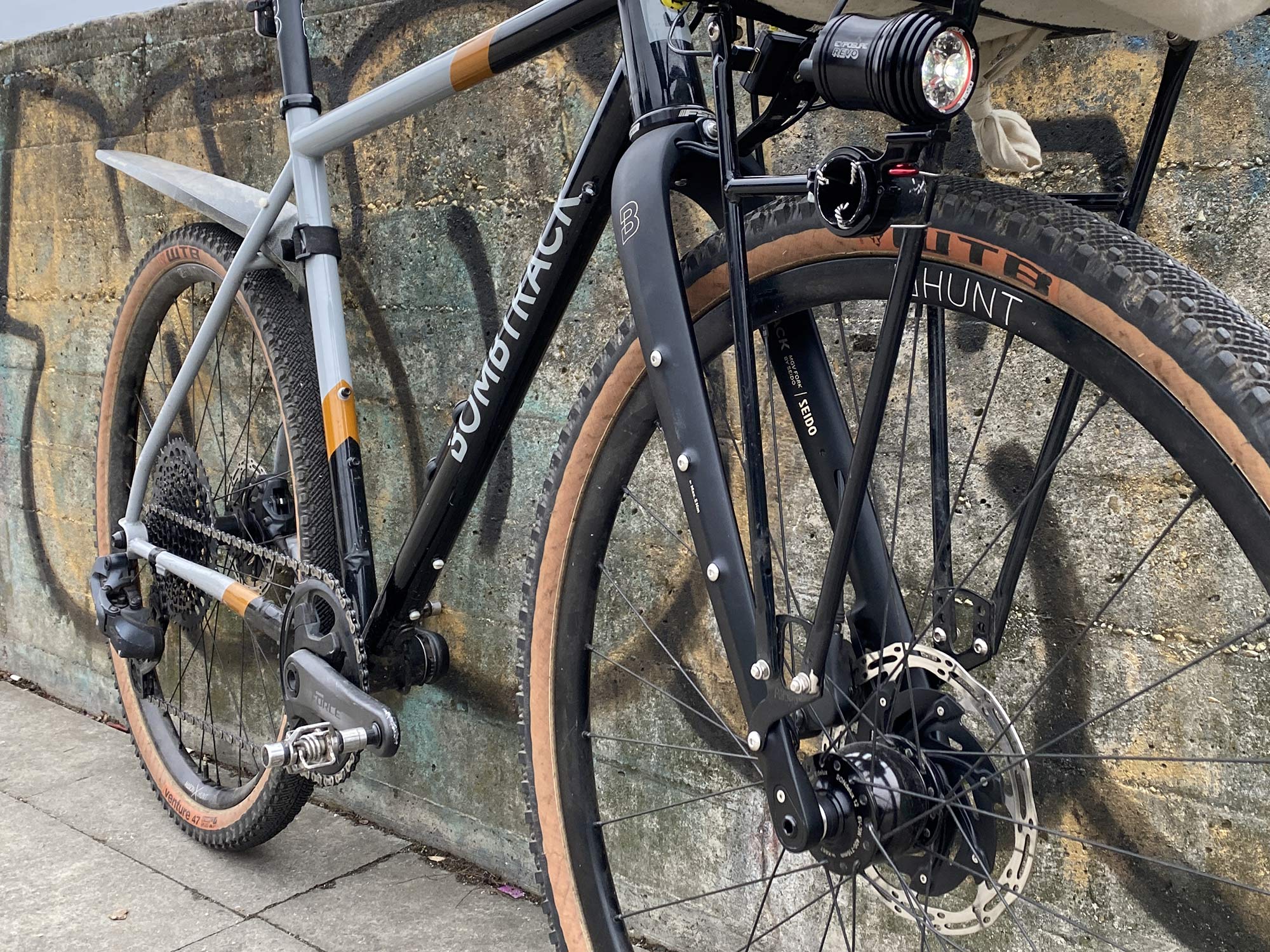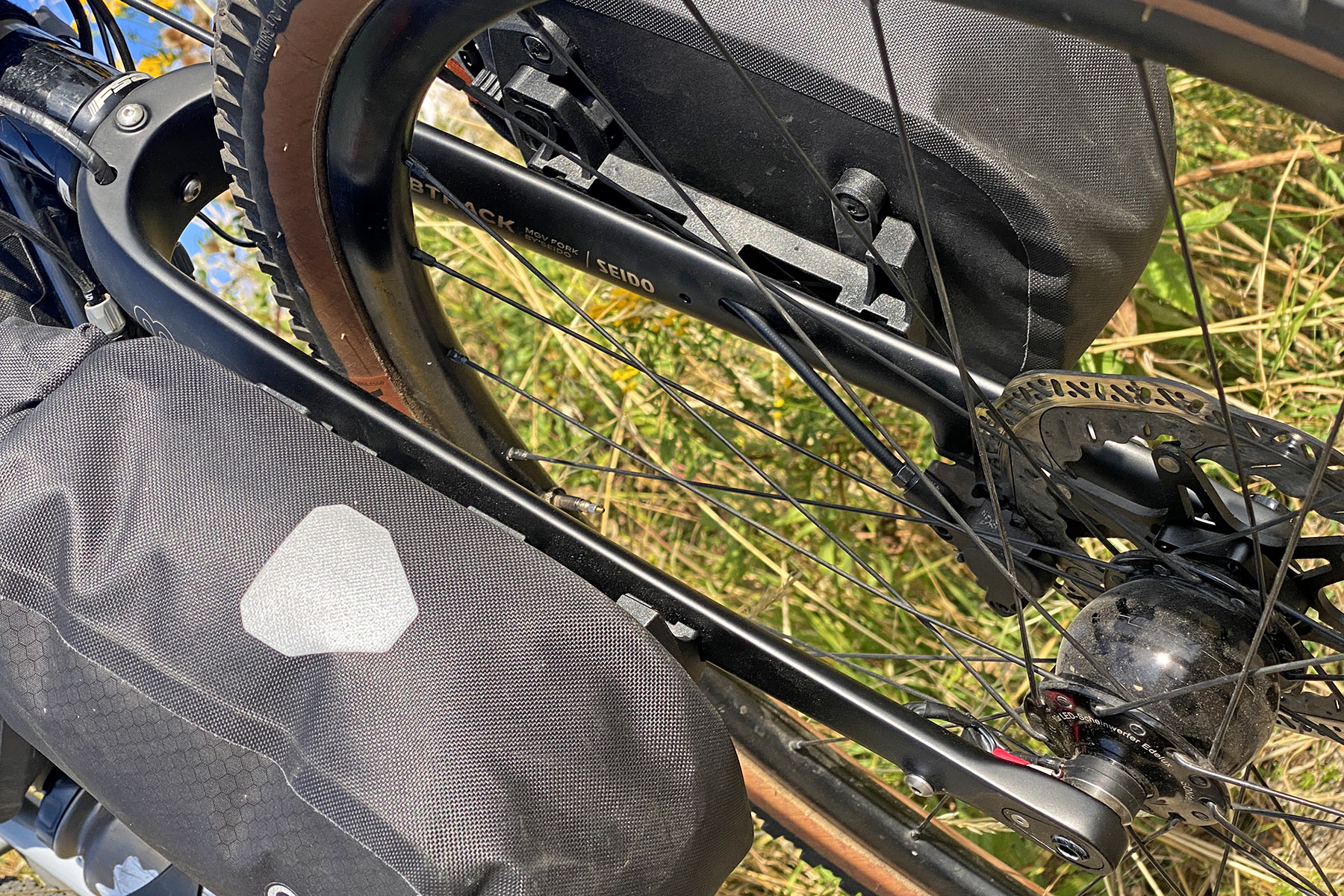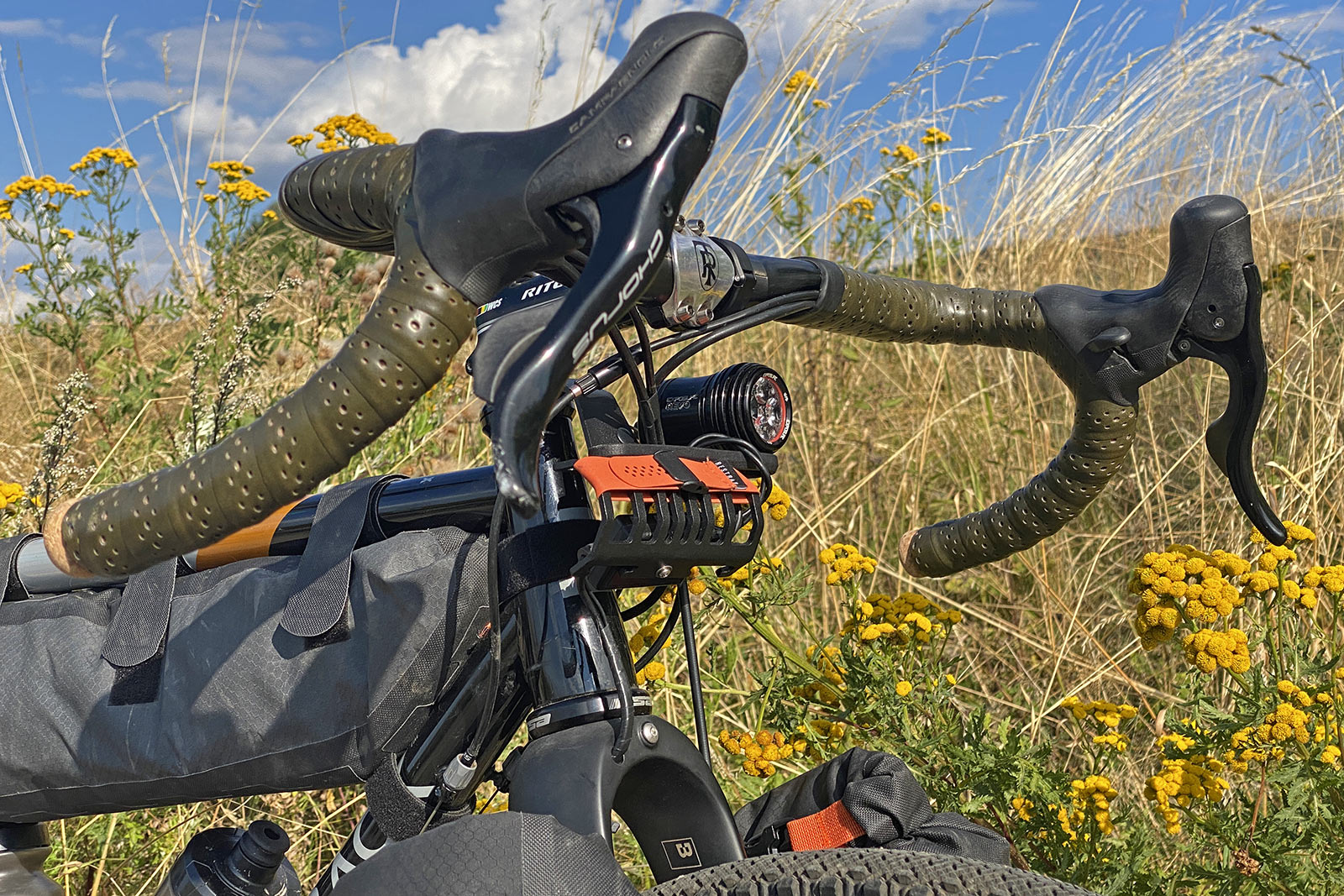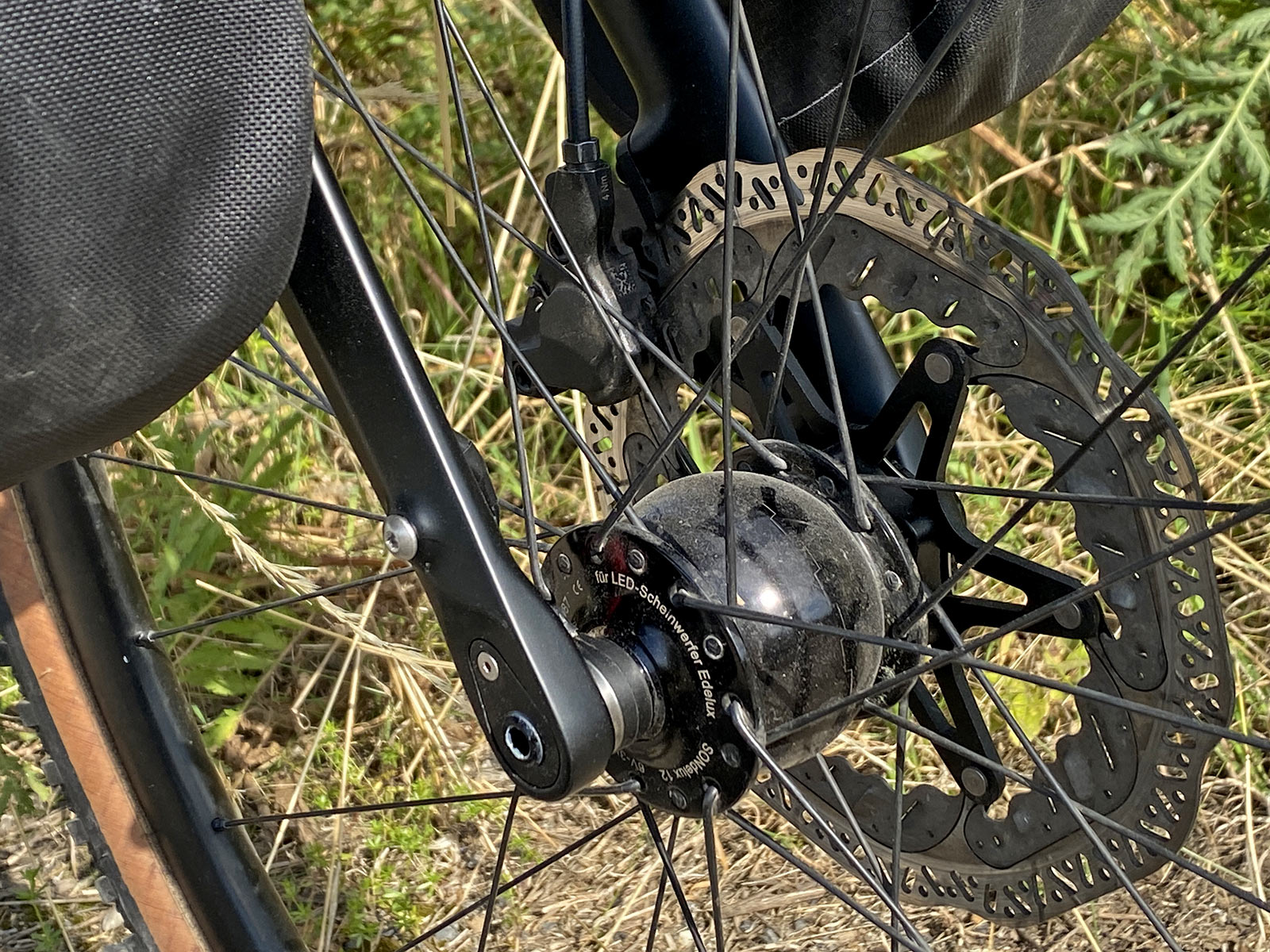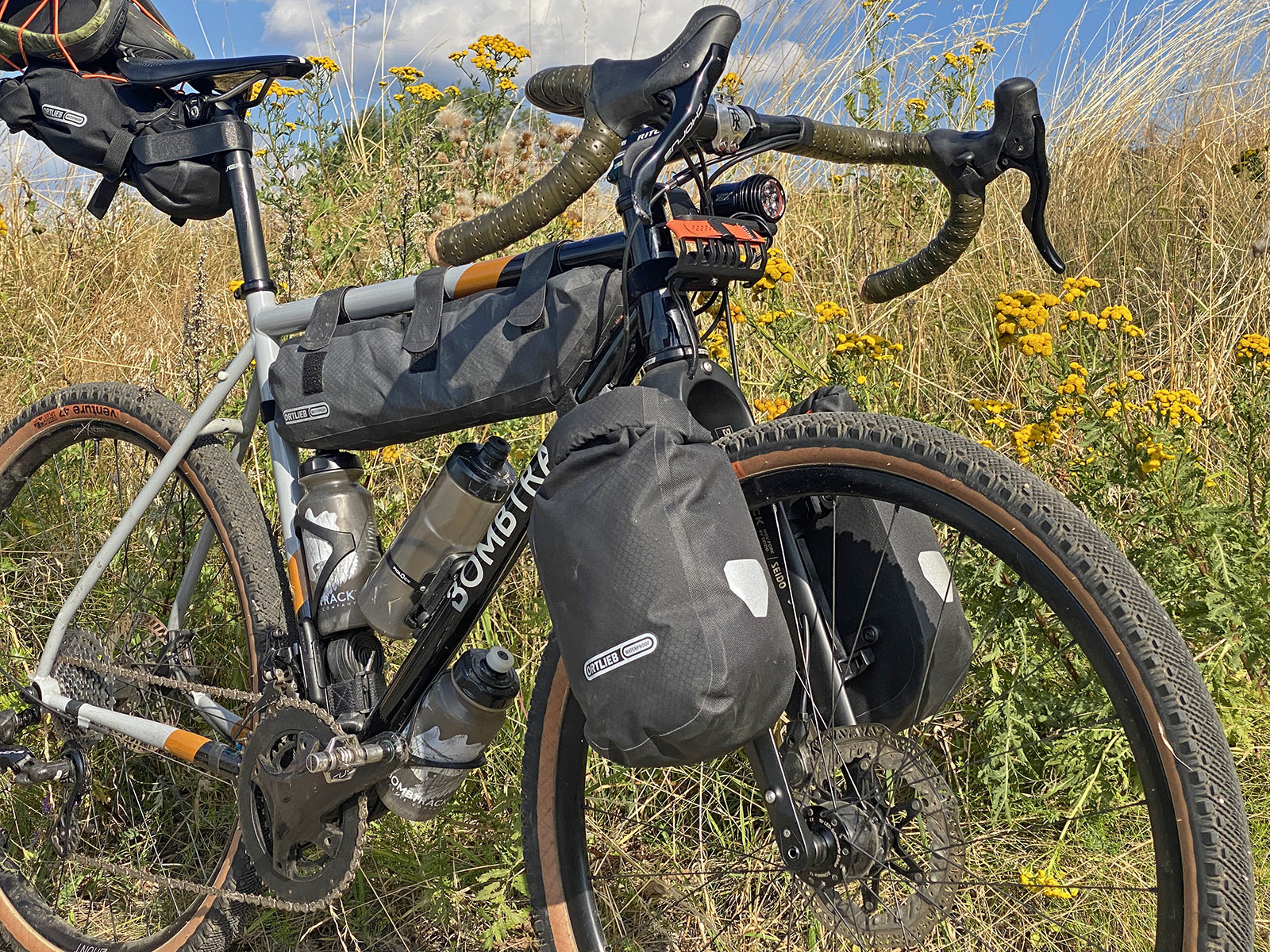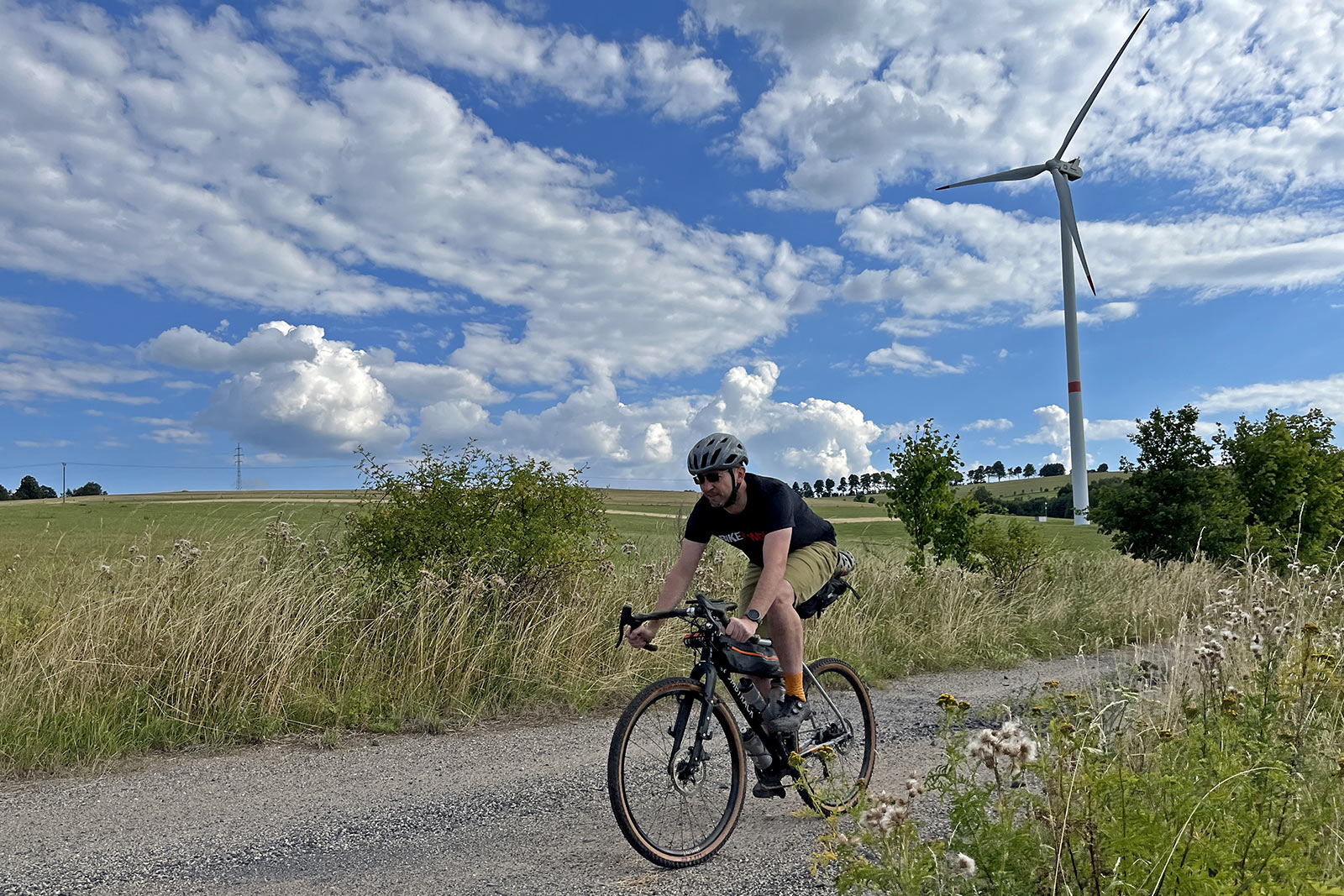Crossing over Bombtrack bikes’ frame & fork offerings into their new separate Seido aftermarket component line, the new MGV fork offers all the adventure-capability you could wish for in a carbon gravel and bikepacking fork. It’s a still pretty rare carbon mix of big tire clearance, all the bikepacking mounts you could ask for, and internal routing from dynamos to disc brakes. So I strapped one onto my own gravel bike to upgrade my adventure capabilities…
Seido MGV carbon fork by Bombtrack
This MGV fork grew out of the success of the Bombtrack EXT forks that they developed to spec on their bigger tire Hook gravel adventure bikes. When they started selling more Hook EXT framesets, and the fork itself, they quickly realized there was an underserved market for riders looking to pack more adventure into their current gravel bikes.
So Bombtrack set out to further refine their adventure gravel fork, and eventually created an entirely new component company out of the project – Seido.
Seido components, born out of adventure
The components were all developed to fill some gaps in Bombtrack’s bike build spec needs for gravel, bikepacking, and all-around off-road adventure bikes. So to make those same affordable no-nonsense parts easily available to more people, Bombtrack spun off Seido to include affordable wheels, cranks, cockpits & accessories for anyone looking for a versatile bike build.
The flagship was this new carbon MGV fork with all the mounts and dynamo routing you need.
What makes it special? Tech details
First, the new full-carbon, 1.5″ tapered steerer Seido MGV fork gets big 29 x 2.25” (700x57mm) or huge 27.5 x 2.5″ (650×63.5mm) tire clearance (even though I’m using it here with pretty tiny by modern standards 650x47mm tires) with a 410mm axle-to-crown length, making it just a shade longer than most standard gravel forks these days. It’s close enough that it shouldn’t have too much of an impact on your geometry, although it might slacken your gravel bike out by 1/2 a degree, at most.
It also gets tons of mounts. There are 3-pack mounts on each leg with a high 4.5kg load limit per leg thanks to molded-in bosses, not just pressed-in riv nuts. Plus, there are also low-rider rack mounts down closer to the axle, that can combine to haul up to 20kg total for a 1-piece lowrider rack that connects over your front wheel.
There’s also full-coverage fender mounts and a replaceable thru-axle thread insert.
The MGV offers adaptable internal routing for just about everything. There are no guided tubes inside, but that means you can go as integrated as you want. There are openings to route dynamo wiring completely inside (all the way up through and out the top of the steerer), a headlight wire port in the crown, internal disc brake routing, a port from inside the steerer to inside the frame for completely internal shift wiring or to route a dynamo-powered taillight completely inside, too.
All that and a claimed weight of 530g.
My uncut MGV fork for review weighed in at 585g, but that included the 30g thru-axle, 10x 3g steel braze-on bolts, and the plastic guide for your brake line. So yeah, a tiny bit lighter than claimed for the fork itself that’s now in my bike.
First Impressions
I put the fork on a steel 2018 Bombtrack Audax frame I ride for gravel, touring, and commuting because it is already one of the most versatile in my home bike stable. It was one of the early Road Plus mixed-surface bikes with the 395mm long, 50mm offset EXT 2 fork, and conservative clearance for 700x40mm or 650x47mm tires.
Geometry-wise, the longer fork slackened out my headtube 0.8° (to 71.2°) and raised my BB 6mm – just what I wanted to get a bit more ground clearance and more off-road-ability. It also shortened Reach by 8mm & raised Stack by 6mm, which were easy to compensate for with a 1cm longer stem and one spacer removed under it. The MGV’s extra offset (53mm) limited impact to just 2mm extra Trail.
If you swapped from a 400mm fork, the head angle change would be just 0.5°, and Trail just 1mm less.
Review: Riding loaded or unloaded – On or off-road
Riding the bike loaded or unloaded with the new fork, it’s done exactly what I hoped for. The fit & feel of the bike is almost exactly the same as before. But it is nicely a bit more stable off-road without really losing the fast all-road feel on hard surfaces.
What’s obviously a big difference in the longer fork is the much increased front tire clearance. I’ve been happy sticking with the same 650x47mm tire setup that I’ve come to appreciate for riding longer distances on any surface.
But now that I’ve seen that the geometry changes were small but favorable, it’s also got me thinking about a wheel setup with a slightly bigger front tire. Maybe a 700×45 up front paired to a 700×40 in the back, or a 650×54 & 47 setup to get even rowdier off-road?
In the meantime with the 47mm WTBs, I’ve ridden the new MGV fork in three different modes – with a Pelago porteur-style Commuter Medium front rack, with a lighter Ortlieb Fork Packs bikepacking setup, or just empty with a lot of small plastic bolts to fill all the mounting holes.
The Pelago rack made it the most capable commuter, carrying tons of stuff and clearly exceeding the allowable load rating without any problems. Officially, the max load of each individual cage mount is 1.5kg.. times 2? or maybe 3 for my front rack setup? so 4.5kg? But Bombtrack says it’s a max 20kg if you use the lowrider mounts and one of the cage mounts on each side together, so I felt pretty comfortable with up to around 12kg here.
Loading the high rack that heavy over the front wheel does wacky things to handling anyway, so I seldom put more than 5-6kg up there anyway.
One of the key features of the MGV fork is its internal routing, especially for a dynamo lighting setup like I have here – with a Hunt Adventure wheelset with a SON hub and an Exposure headlight. But unguided internal routing requires patience and commitment.
I can be patient, and managed to get every wire and hose where I wanted it with a magnetic Park Tool Cable Guide set. But it wasn’t super quick or easy. But that’s par for the internal routing course…
What’s more tricky is that I am indecisive. And I like to change my setup fairly regularly as I try out new gadgets. All that internal routing isn’t easy to manage, and for me it’s simply hard to make up my mind. Swapping from the front rack to this setup with the tiny new Restrap Bumper Bar was easy enough (with a Sinewave Revolution USB-charger box mounted inside of it)…
But now, I’m already thinking that I’d like to put all those dynamo wires inside the headtube and maybe install a USB plug charger headset cap? And maybe connect a dynamo-powered taillight inside a LightSkin seatpost?
See? Lots of ideas and plenty of re-routing to go with it.
Another feature/trick with the MGV fork is that it has flat mount disc brakes compatible with 160 or 180mm rotors (and a 12mm thru-axle). But it is a Flat Mount 160 mount. That means that it automatically sizes your flat mount caliper up to the next size. If you have a standard mount that can do 140 or 160, now it will do 160 or 180. It you have a Campy brake that is 160mm without any adapter plate, now you have 180mm brakes.
And has anyone seen any Campagnolo 180mm rotors? Because I don’t have any, so I opted for this pretty massive Jagwire CR1 vented rotor that may or may not have needed some minor fin modifications to fit quietly inside the Campy caliper. Just something to not overlook, like I did at first.
Final Thoughts
All in all, the swap to the Seido by Bombtrack MGV fork has been a super positive update to a bike I already have loved for several years. While before it was somewhat limited in its carrying capacity – in both commuter and bikepacking modes – now it has improved hauling capabilities all around.
My only real gripe is that I have been wishy-washy indecisive about what actual internal dynamo wire routing setup I prefer, so I have been a bit slower to finalize everything. But I think it’s time to suck it up and go even more integrated inside.
Lastly, looking at the bigger tire clearance & slightly slackened geometry… now the MGV fork has me hunting for more off-road places to ride a bike that I used to limit to dirt roads at the most extreme. Now I see no issue with venturing more over chunky gravel and singletrack, even when I’m loaded down for some bikepacking adventure.
Seido MGV fork – Pricing & Availability
The first production batch of the new Seido MGV fork has rolled out globally this past week to Bombtrack & Seido dealers, meaning they are kind of available now. But we do hear that quantities are still a bit limited for this $467 / 350€ MGV fork – and many were reserved in advance. So, if you are looking to upgrade a bike for more adventure, it’s probably best to get in touch with your local dealer now to see if they can round one up for you soon.
